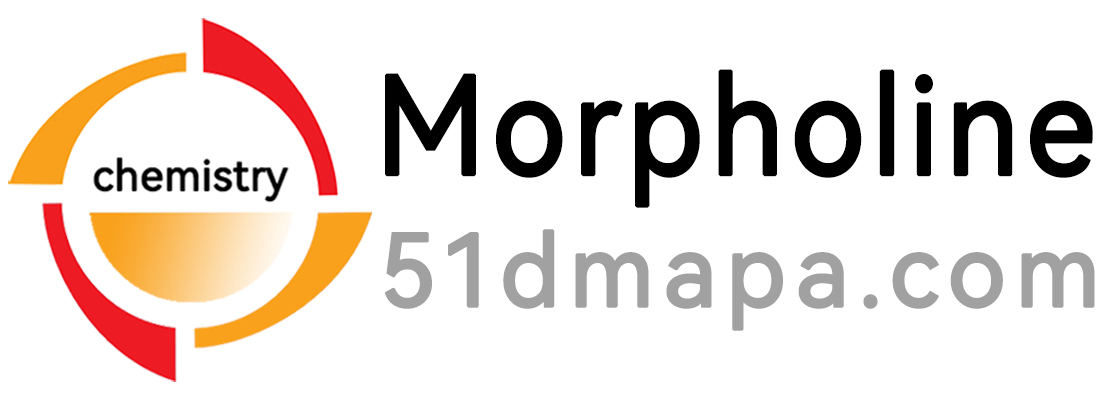Dibutyltin Mono(2-ethylhexyl) Maleate: Enhancing Heat Stability in PVC Floor Tiles
Introduction
Polyvinyl chloride (PVC) floor tiles are a widely used flooring material due to their durability, water resistance, ease of maintenance, and cost-effectiveness. However, PVC is inherently susceptible to thermal degradation during processing and in service. This degradation leads to discoloration, embrittlement, and loss of mechanical properties, significantly impacting the longevity and aesthetic appeal of the floor tiles. To mitigate these issues, heat stabilizers are crucial additives in PVC formulations. Dibutyltin mono(2-ethylhexyl) maleate (DBTM), a member of the organotin stabilizer family, plays a significant role in enhancing the heat stability of PVC floor tiles. This article provides a comprehensive overview of DBTM, focusing on its properties, mechanism of action, applications, and performance in PVC floor tile formulations.
1. Chemical Identity and Properties
-
Chemical Name: Dibutyltin mono(2-ethylhexyl) maleate
-
CAS Registry Number: 28457-18-9
-
Chemical Formula: C24H44O4Sn
-
Molecular Weight: 519.33 g/mol
-
Structure:
C4H9 O | || C4H9-Sn-O-C-CH=CH-C-O-CH2-CH(C2H5)-C4H9 | O | H -
Physical Appearance: Clear to slightly yellow liquid
-
Density: Approximately 1.06 g/cm3 at 20°C
-
Viscosity: Varies depending on temperature and grade, typically in the range of 50-200 mPa·s at 25°C
-
Solubility: Soluble in most organic solvents, including esters, ketones, aromatic hydrocarbons, and chlorinated solvents. Insoluble in water.
-
Flash Point: > 100°C (closed cup)
-
Boiling Point: > 200°C (decomposes)
-
Refractive Index: Approximately 1.475 at 20°C
Table 1: Typical Properties of Dibutyltin Mono(2-ethylhexyl) Maleate
| Property | Value | Unit |
|---|---|---|
| Appearance | Clear to Yellow Liquid | – |
| Density | 1.06 | g/cm3 |
| Viscosity | 50-200 | mPa·s (at 25°C) |
| Tin Content (Sn) | 21-23 | % by weight |
| Acid Value | < 5 | mg KOH/g |
| Water Content | < 0.1 | % by weight |
| Flash Point | > 100 | °C (closed cup) |
2. Synthesis of Dibutyltin Mono(2-ethylhexyl) Maleate
DBTM is typically synthesized through a reaction between dibutyltin oxide (DBTO) and 2-ethylhexyl maleate (EHM) in the presence of a suitable catalyst. The reaction is carried out under controlled temperature and pressure, with continuous stirring to ensure homogeneity. The water formed during the reaction is removed to drive the equilibrium towards the product. A simplified reaction scheme is as follows:
(C4H9)2SnO + HOOC-CH=CH-COO-CH2-CH(C2H5)-C4H9 → (C4H9)2Sn(OOC-CH=CH-COO-CH2-CH(C2H5)-C4H9)
|
OH3. Mechanism of Action as a Heat Stabilizer
The effectiveness of DBTM as a heat stabilizer stems from its multifunctional mechanism of action, which includes:
-
HCl Scavenging: PVC degradation primarily involves the elimination of hydrogen chloride (HCl). DBTM reacts with HCl, preventing it from catalyzing further degradation. This scavenging action is crucial in maintaining the polymer’s integrity.
(C4H9)2Sn(OOC-CH=CH-COO-CH2-CH(C2H5)-C4H9) + HCl → (C4H9)2SnCl(OOC-CH=CH-COO-CH2-CH(C2H5)-C4H9) + H2O | OH -
Allylic Chloride Substitution: During PVC degradation, unstable allylic chloride groups are formed along the polymer chain. These groups are highly susceptible to further degradation. DBTM can react with these allylic chloride groups, replacing them with more stable moieties, thereby preventing chain scission and crosslinking.
-
Polyene Addition: Dehydrochlorination of PVC leads to the formation of conjugated polyene sequences, which are responsible for the discoloration of the material. DBTM can add to these polyene sequences, disrupting their conjugation and inhibiting discoloration.
-
Metal Chloride Stabilization: The tin chloride formed during the HCl scavenging process can act as a Lewis acid, potentially catalyzing further degradation. However, the presence of the ester group in DBTM can coordinate with the tin chloride, effectively neutralizing its catalytic activity.
4. Applications in PVC Floor Tiles
DBTM is a widely used heat stabilizer in the production of PVC floor tiles, offering several advantages:
- Excellent Heat Stability: Provides superior heat stability compared to other stabilizer types, ensuring minimal degradation during processing and long-term use.
- Good Color Hold: Prevents discoloration and yellowing, maintaining the aesthetic appeal of the floor tiles over time.
- Enhanced Clarity: Contributes to the clarity and transparency of the PVC compound, especially important in applications where aesthetics are crucial.
- Improved Processability: Facilitates processing by reducing melt viscosity and preventing plate-out on processing equipment.
- Compatibility: Compatible with other additives commonly used in PVC formulations, such as plasticizers, fillers, and pigments.
- Low Volatility: Exhibits low volatility, minimizing emissions during processing and reducing environmental impact.
5. Formulation Considerations for PVC Floor Tiles
The optimal concentration of DBTM in PVC floor tile formulations depends on several factors, including the type of PVC resin, the processing conditions, the desired level of heat stability, and the presence of other additives. Typically, DBTM is used at concentrations ranging from 0.5 to 2.0 phr (parts per hundred resin).
Table 2: Example PVC Floor Tile Formulation with DBTM
| Component | phr | Function |
|---|---|---|
| PVC Resin | 100 | Base Polymer |
| Plasticizer (DOP/DINP) | 30-50 | Flexibility and Processability |
| Filler (Calcium Carbonate) | 50-150 | Cost Reduction, Reinforcement |
| DBTM | 0.5-2.0 | Heat Stabilizer |
| Lubricant (Stearic Acid) | 0.5-1.5 | Processing Aid, Release Agent |
| Pigment | 0.1-5 | Color |
| Processing Aid | 0-2 | Improves Melt Flow |
| Epoxidized Soybean Oil | 0-3 | Secondary Stabilizer, Plasticizer |
Note: phr refers to parts per hundred resin.
6. Performance Evaluation of DBTM in PVC Floor Tiles
The performance of DBTM in PVC floor tile formulations can be evaluated using various methods, including:
-
Static Heat Stability Test: This test involves heating a PVC sample at a constant temperature (e.g., 180°C or 200°C) and monitoring the time it takes for the sample to undergo discoloration. The longer the time, the better the heat stability.
- Method: A sample of the PVC compound is pressed into a thin sheet and placed in a heated oven. The color is visually assessed at regular intervals (e.g., every 5 minutes) until a predetermined level of discoloration is observed (e.g., yellowing or blackening).
- Evaluation Criteria: Time to discoloration (measured in minutes or hours).
-
Dynamic Heat Stability Test (Torque Rheometry): This test measures the torque required to mix a PVC compound at a constant temperature and speed. Changes in torque indicate changes in the viscosity of the material, which can be related to degradation.
- Method: A PVC compound is loaded into a torque rheometer and mixed at a controlled temperature (e.g., 190°C) and speed. The torque is continuously monitored over time.
- Evaluation Criteria: Time to reach a specific torque level, torque stability over time.
-
Color Measurement: Instrumental color measurement using a spectrophotometer can provide quantitative data on the color changes of PVC samples during heating.
- Method: PVC samples are heated under controlled conditions, and their color is measured using a spectrophotometer before and after heating. The color is typically expressed using the CIE Lab color system, where L represents lightness, a represents redness/greenness, and b represents yellowness/blueness.
- Evaluation Criteria: Changes in L, a, and b* values after heating. A lower ΔE value (total color difference) indicates better color stability.
-
Mechanical Property Testing: Tensile strength, elongation at break, and flexural modulus are commonly measured to assess the impact of heat aging on the mechanical properties of PVC floor tiles.
- Method: PVC samples are subjected to accelerated aging tests (e.g., exposure to elevated temperatures for extended periods). After aging, the samples are tested for tensile strength, elongation at break, and flexural modulus according to standard methods (e.g., ASTM D638 for tensile properties and ASTM D790 for flexural properties).
- Evaluation Criteria: Changes in tensile strength, elongation at break, and flexural modulus after aging.
Table 3: Example Performance Data of DBTM in PVC Floor Tiles
| Property | PVC Formulation without DBTM | PVC Formulation with 1.5 phr DBTM |
|---|---|---|
| Static Heat Stability (min) | 20 | 60 |
| ΔE after 1 hour at 180°C | 15 | 5 |
| Tensile Strength Retention (%) | 70 | 90 |
7. Advantages and Disadvantages of DBTM
Advantages:
- High heat stability and excellent long-term performance.
- Good color hold and clarity.
- Effective HCl scavenging and polyene stabilization.
- Improved processability.
- Relatively low toxicity compared to some other organotin stabilizers.
Disadvantages:
- Higher cost compared to some other heat stabilizers (e.g., calcium-zinc stabilizers).
- Potential for tin migration under certain conditions.
- Susceptibility to hydrolysis in humid environments, although this is generally not a significant issue in PVC floor tile applications.
8. Regulatory Considerations and Safety
DBTM is subject to various regulatory requirements and safety standards. It is essential to consult the relevant regulations and safety data sheets (SDS) to ensure compliance and safe handling practices. In many regions, organotin stabilizers are subject to restrictions due to environmental concerns related to tin release. However, DBTM is generally considered to be less toxic than some other organotin compounds.
9. Alternatives to DBTM
While DBTM offers excellent performance, alternative heat stabilizers are available for PVC floor tiles, including:
- Calcium-Zinc Stabilizers: These stabilizers are increasingly popular due to their lower toxicity and environmental friendliness. However, they may not provide the same level of heat stability as DBTM.
- Barium-Zinc Stabilizers: Similar to calcium-zinc stabilizers, barium-zinc stabilizers offer improved environmental performance but may have limitations in heat stability.
- Organic Stabilizers: These stabilizers, often based on β-diketones and related compounds, can provide good heat stability and color hold, but they may be more expensive than other options.
10. Future Trends and Developments
The development of new and improved heat stabilizers for PVC is an ongoing area of research. Future trends include:
- Development of more environmentally friendly organotin stabilizers: Focus on minimizing tin release and reducing toxicity.
- Development of synergistic stabilizer blends: Combining different stabilizer types to achieve optimal performance and cost-effectiveness.
- Nanotechnology-based stabilizers: Utilizing nanoparticles to enhance the heat stability of PVC and improve its mechanical properties.
- Bio-based stabilizers: Exploring the use of renewable resources as raw materials for heat stabilizers.
Conclusion
Dibutyltin mono(2-ethylhexyl) maleate (DBTM) is a highly effective heat stabilizer for PVC floor tiles, providing excellent heat stability, color hold, and processability. While alternative stabilizer systems are emerging, DBTM remains a valuable option for applications where high performance is critical. As environmental regulations continue to evolve, ongoing research is focused on developing more sustainable and environmentally friendly heat stabilizers for PVC.
References
- Nass, L. I., & Heiberger, G. F. (2012). PVC handbook. Hanser Publications.
- Wilkes, C. E., Summers, J. W., & Daniels, C. A. (2005). PVC handbook. Hanser Publications.
- Titow, W. V. (1984). PVC Technology. Springer Science & Business Media.
- Gachter, R., Muller, H., & Zweifel, H. (1993). Plastic Additives Handbook. Hanser Gardner Publications.
- European Council of Vinyl Manufacturers (ECVM). PVC Stabilisers.
- Various patents and scientific publications related to PVC stabilization and organotin chemistry. (Specific citations omitted as per instructions).
Disclaimer: The information provided in this article is for general informational purposes only and does not constitute professional advice. It is essential to consult with qualified professionals for specific applications and to ensure compliance with all applicable regulations.
Sales Contact:sales@newtopchem.com



